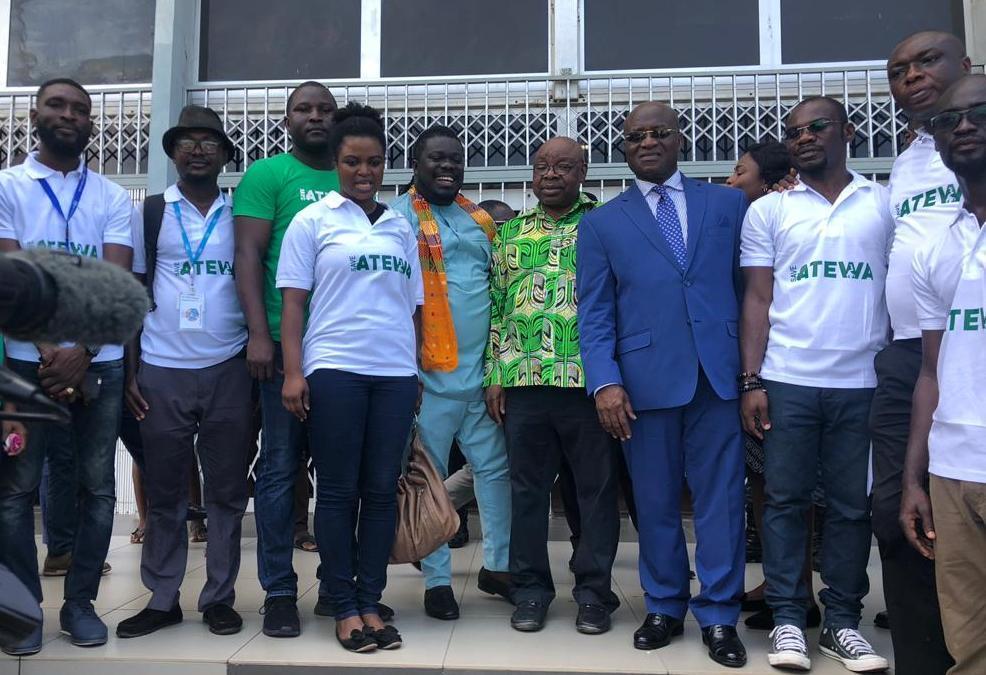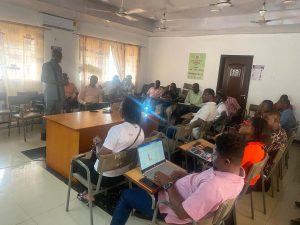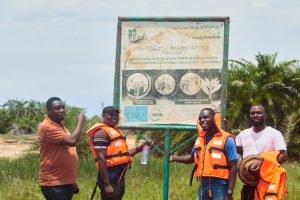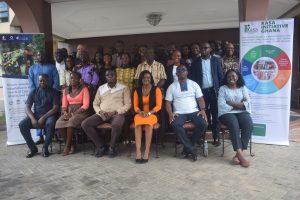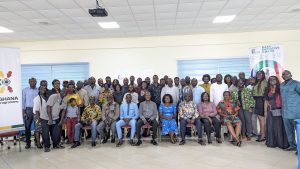The Coalition of NGOs against Mining in Atewa Forest on Friday, June 21, 2019 presented to the Parliament of Ghana, a petition which concerns the mining of Bauxite in the Atewa Forest.
The aim of the march was to draw Parliament’s attention of the need to make informed decisions for the protection and effective management of the Atewa forest and the water shed it feeds by ensuring the Landscape is excluded from any form of mining exploitation.
The Majority leader, Mr. Osei Kyei Mensah Bonsu received the Petition on behalf of Parliament and promised that Parliament would study the content of the petition and address the issue in due time.
Government Response

Responding to the petition, Minister for Lands and Natural Resources, Mr. Kwaku Asomah-Cheremeh said government will pursue reasonable and sustainable mining in Atewa Forest Reserve adding that, the mining of bauxite would be done using a modern mining technology which will in turn, maintain the sanctity of the forest.
“We’re determined to do reasonable and sustainable mining that the environment would be saved. We’re not going to destroy the natural edifice by way of destroying trees and rivers on the ground,” he said.
Mr Asomah-Cheremeh continued: “We have listened to the concerns of the people and that’s why we’re coming up with reasonable methodology and sustainable ways of doing bauxite mining so that the water bodies and forest will be maintained so that there will be no problems.”
This line seems to be the only response government has given since campaigns against mining in the Atewa began. But in counter responses, environmentalists have also argued that there is there is nothing sustainable and responsible about mining bauxite in a watershed like Atewa Forest.
“We know there is no “modern technology” that can remove the red mud without first removing the forest that grows on top. In actual fact, if the President has been told that there is a technology that can remove the red mud without destroying the forest cover which supports wildlife; without negative impact on downstream water bodies and underground aquifers, and without the health-related issues associated with the red dust that comes with bauxite mining, then that information is not factual and unproven,” Concerned Citizens of Atewa Forest had asserted in an earlier statement.
Environmentalists have therefore challenged government to show to Ghanaians what those ‘sustainable’ technologies are.
The March
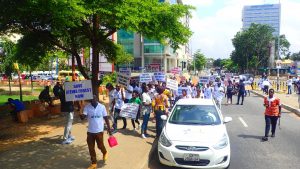
Prior to the presentation of the petition, the group embark on several activities including a Stand Still Street Messaging on some principal streets in Accra.
The peaceful protest continued late Friday morning with a peaceful march from the Ghana Wildlife Society premises at Ridge to Parliament—where the petition was delivered.
Together with members of the general public, the CSOs poured onto the streets of Accra amidst chanting and singing; demanding government to rescind its plan to mine in the Atewa Forest. They were also clad in various paraphernalia with the inscription, ‘Save Atewa’ and holding placards with several messages on them.
The coalition is made up of Arocha_Ghana Forest Watch Ghana Kasa Initiative Ghana Ecocareghana
A Rocha Ghana, Forest Watch Ghana, Friends of the Earth, Tropenbos Ghana, UN Youth Ghana, Civic Response and Eco Care Ghana. The rest are Kasa Initiative Ghana, Plastic Punch, Ghana Wildlife Society, GYEM and Hipsters of Nature.
SOURCE: GHANA.AROCHA.ORG

